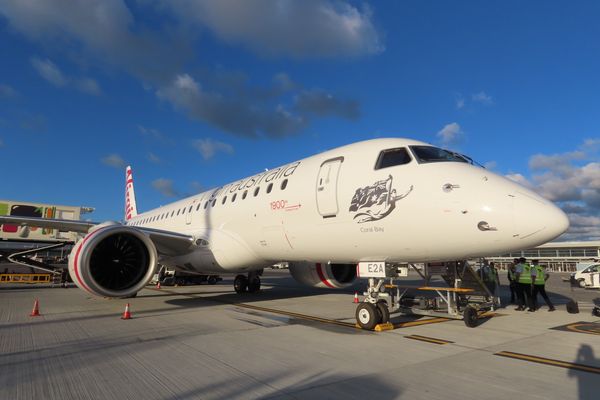The aviation industry has started leaning towards one pilot-operated aircraft for the plans. This system would assist with crew shortage problems and lower costs in general. However, the whole operation's pressure would be on just a single pilot, which creates further questions about the possible safety results of this plan.

Safety of One Pilot Flights
Over 40 countries have requested a change to one-pilot operations. The request sent to the International Civil Aviation Administration (ICAO) demands it become a safe reality for commercial flights to operate as stated. The European Union Aviation Safety Agency (EASA) is discussing how to make solo pilot flights a reality.
EASA has also been curating rules to foresee future scenarios for this transformation. Even though EASA stated that suggested flights could start in 2027, some pilots shared their concerns about the change as it could also be a hard-to-market idea to future passengers.
The one-pilot operations could put more pressure on the only pilot in the cockpit since an emergency could occur. In that case, a company would be better off deciding how to proceed with the operation.

An Airbus SE A330 captain for Qantas Airways Ltd. and president of the Australian & International Pilots Association, Tony Lucas, shared his concerns about this situation:
"The people going down this route aren't the people who fly jets every day. When things go awry, they go awry fairly quickly."
On June 1, 2009, an Air France Flight 447 operating to Paris departed from Rio de Janeiro. While cruising over the Atlantic Ocean, two co-pilots in the cockpit started receiving faulty speed readings, likely from frozen detector tubes outside the aircraft. The captain was resting in the cabin during the emergency, and by the time he reached the cockpit 90 seconds later, the plane was in an aerodynamic stall from which it never recovered.
In a short amount of time, the tragic events happened; the aircraft hit the water, killing all 228 people on board. This creates a great example of the need for more than one pilot operating on a flight to make a more prompt decision in a dangerous situation like this one.

Why Most Commercial Flights Have Two Pilots
A two-pilot-operated flight creates a better ground to solve emergencies since pilots can cooperate with their overall skills. A solo pilot could struggle to manage a critical situation alone. While the flight continues, one pilot usually handles the controls and steers the aircraft while the other monitors for any issues or anomalies.
When one pilot falls ill, the other can safely take over and continue the operation. The pilots can also take breaks and turns to avoid fatigue and create a more comfortable environment for them while ensuring the safety of the passengers.

When the Change Could Occur
The transformation brings many challenges within. It is still not structured enough for a situation where the pilot could fall ill or fly in a non-standardized way, which could create a dangerous outcome. Remote assistance should be able to replace the expertise, safety, and prompt decision-making skills of a second pilot.
The aviation industry has been improving towards this goal; in the 1950s, the plane was operated by 5 people in the cockpit. A captain, a first officer, a flight engineer, a navigator, and a radio operator. The improvements in aviation technology have made the last three positions unnecessary. One-pilot operations may happen soon.
EASA's head of Communications, Janet Northcote, stated: "We are potentially removing the last piece of human redundancy from the flight deck." According to an EU request to ICAO, a solo pilot flight is at least as safe as having two people operating the aircraft.

Boeing's Southeast Asia President Alexander Feldman stated at a Bloomberg business summit in Bangkok:
"The psychological barriers are probably harder than the technological barriers. The technology is there for single pilots, it's really about where the regulators and the general public feel comfortable."
The aimed operations could be reached by steps to ensure safety. First, one of the pilots would operate in the cockpit while the other takes a rest in the cabin. Using this method, it could be understood if a solo pilot flight situation can happen by easing into the change. In the end, flying could be fully automated with minimal need from the pilot in the cockpit. In a situation where the pilots cannot operate, the aircraft could land at a preselected airport, according to EASA. However, such flights are not likely to be initiated until 2030.

No situation has proven a safer flight with one pilot in the near past. The International Federation of Air Line Pilots' Associations told ICAO that nothing has proved safer than "a second rested, qualified, well-trained pilot physically present on the flight deck." Joe Leader, the CEO of Apex, also mentioned that "Commercial airline passengers absolutely expect and deserve two pilots in the cockpit."
EASA acknowledges the concerns about solo flying: "These concepts will not be implemented until the aviation community is comfortable that operations will be at least as safe as they are today," Northcote said. As well as safety reasons, the change could also affect aspiring pilots and the current training pilots since the crew will be smaller and the need for the pilots will be lower.
Also, even though the technology is advanced enough to ensure the safety of the passengers, customers will require human presence on the flights for a more comfortable experience. In that case, solo pilot operations may bring concerns and untrust to the flight. Structuring such a plan will be possible as the companies in the aviation industry and the regulators prove and ensure safety.
Maiden Brazil: Virgin Australia Welcomes the Iconic Embraer E2 » China Eastern Inaugurates New World's Longest Flight »
Comments (0)
Add Your Comment
SHARE
TAGS
INFORMATIONAL Pilot Safety Future InnovationRECENTLY PUBLISHED
 Maiden Brazil: Virgin Australia Welcomes the Iconic Embraer E2
Known for its aging intrastate fleets and unmatched concentration of Fokker 100s, Perth Airport has been a time capsule for aviation enthusiasts. Now, Virgin Australia Regional Airlines is breaking tradition with the arrival of the cutting-edge Embraer E190-E2, ushering in a new era for Western Australian air travel.
TRIP REPORTS
READ MORE »
Maiden Brazil: Virgin Australia Welcomes the Iconic Embraer E2
Known for its aging intrastate fleets and unmatched concentration of Fokker 100s, Perth Airport has been a time capsule for aviation enthusiasts. Now, Virgin Australia Regional Airlines is breaking tradition with the arrival of the cutting-edge Embraer E190-E2, ushering in a new era for Western Australian air travel.
TRIP REPORTS
READ MORE »
 China Eastern Inaugurates New World's Longest Flight
China Eastern recently launched its longest flight, a route connecting Shanghai and Buenos Aires via a stopover in Auckland. Inaugurated in December, this was advertised as a “Direct Air Link” between Asia and South America.
ROUTES
READ MORE »
China Eastern Inaugurates New World's Longest Flight
China Eastern recently launched its longest flight, a route connecting Shanghai and Buenos Aires via a stopover in Auckland. Inaugurated in December, this was advertised as a “Direct Air Link” between Asia and South America.
ROUTES
READ MORE »
 Essential Legal Tips for Tourists Chartering a Yacht in Dubai
Discover how yacht rentals in Dubai are regulated and learn what every tourist should know about contracts, insurance, and taxes before setting sail.
TRIP REPORTS
READ MORE »
Essential Legal Tips for Tourists Chartering a Yacht in Dubai
Discover how yacht rentals in Dubai are regulated and learn what every tourist should know about contracts, insurance, and taxes before setting sail.
TRIP REPORTS
READ MORE »



